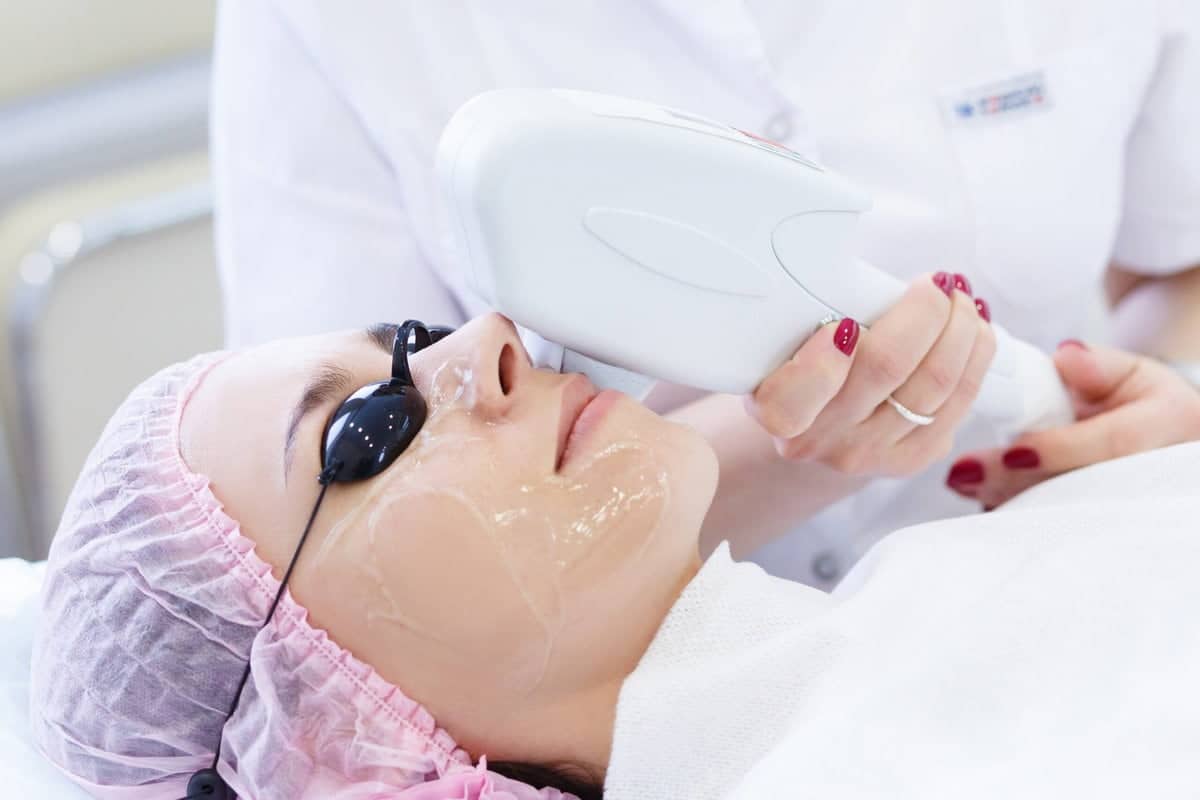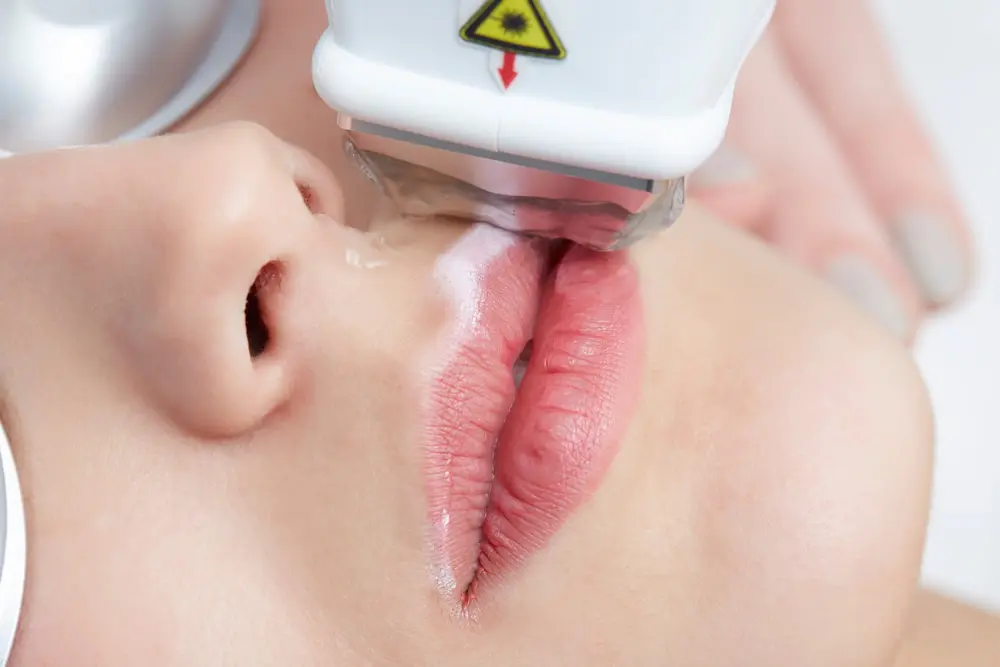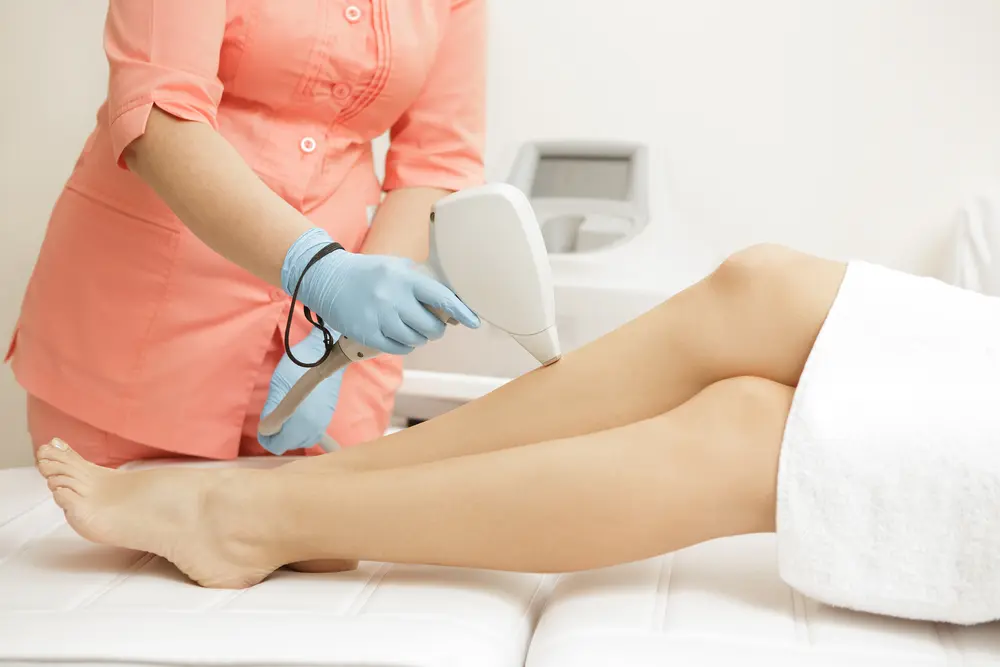Intense Pulsed Light Therapy (IPL) is a light therapy used in the world of dermatology and cosmetology, which uses pulses of light to treat a wide variety of skin problems.
IPL Intense Pulsed Light Uses
- Treatment of age spots, pigmentation, freckles and scarring.
- Improve sun exposure damage.
- Acne treatment and acne scarring.
- Stretch marks.
- Improve skin aging and fine lines.
- Stimulate increased natural collagen production.
- Treatment of birthmarks and red marks.
- Rosacea and treatment of capillaries in the face.
- Remove unwanted hair.
Intense Pulsed Light (IPL) Therapy
- Safe and FDA approved procedure.
- He does not need a recovery period and can leave the clinics and return to normal life directly.
- Helps improve skin texture by stimulating the skin’s natural collagen production.
- Accurately targets damaged and pigmented cells without damaging surrounding vessels and tissues.
- It can treat more than one skin problem at the same time unlike a laser that only treats one problem.
IPL Mechanism
The light energy emitted by the technology turns into heat and then the pigmented cells in the skin absorb the heat energy, which in turn breaks down and destroys the unwanted pigment in order to treat age spots, sunspots, freckles and other pigments. In the same way, it also destroys hair follicles to prevent hair from growing back in undesirable places.
How the procedure works
Before starting the procedure, the nurse will apply an anesthetic cream on the skin for 30 minutes, and then the doctor will apply a special gel in order to protect the skin and facilitate the movement of the handle in addition to reducing the reflection of IPL waves on the skin. Before starting the treatment, the patient will wear dark glasses to protect the eye and then the doctor will start the session through a hand-held handle. When starting to release the pulses, some reviewers feel light bites similar to some rubber band bites. After covering all the targeted areas, the doctor will clean the skin of the remaining gel and apply a sunscreen cream.
IPL technology can be used on many areas of the body, including:
- face and neck area.
- Neck & décolleté
- Hands and legs.
Duration of the session and continuation of results
The duration of the session usually lasts from 20-30 minutes, depending on the size of the area targeted for treatment. The appropriate number of sessions is determined by the doctor according to the condition and the purpose of the treatment. Doctors usually recommend undergoing approximately 3-6 sessions to obtain the best results, while undergoing hair removal sessions requires 6-12 sessions. There should be a period of one month between the session and the session to allow the skin to fully heal to ensure the desired results.
The results of the sessions often last from 6 months to a year and to maintain the results it is recommended to conduct one to two sessions every 6 months as follow-up sessions.
People who are not candidates for treatment
- People who tend to have protruding scars ( keloids ).
- Women during pregnancy and lactation.
- People with active skin conditions.
- People with sunburn.
- dark-skinned people.
- People with light hair as IPL is more effective on dark hair.
Before session
- Avoid sun exposure and tanning beds for 4 weeks before treatment.
- On the day of the appointment, do not use perfume or makeup to avoid any irritation to the skin.
- Avoid using home scrubs or chemical peels.
- Waxing Spa
- Avoid medications and supplements that cause blood thinning.
- Do not use creams and products containing vitamin A such as Retinol A.
- People with a history of herpes should take an antiviral medication before and after the procedure.
After session
- Avoid using hot water on areas targeted for treatment.
- Cold compresses can be used to relieve the feeling of heat.
- No exposure to sunlight and use of SPF 50 + sunscreen.
- Dark spots may become more pigmented before they begin to fade.
- Do not use cosmetics in case of skin irritation or pain.
- Use a gentle moisturizer on the skin and drink water in sufficient quantities during the day.
- Avoid strenuous exercise in the first days after treatment to prevent swelling that can slow the healing process.
Side Effects
It is a gentle and low-risk procedure where the common side effects of IPL are limited to mild redness and swelling of the skin in the first hours after the procedure. The redness usually fades within 1-2 days. In some cases, some people may experience other symptoms such as:
- Appearance of skin bruises.
- Change in skin tone.
- Skin allergy
IPL technology with other cosmetic techniques
it is one of the technologies available in the M22 which is includes many other laser technologies, which helps to treat many various skin problems. IPL treatment can be more effective when combined with other cosmetic procedures such as:
It may be combined with laser technologies such as Fx and Fraxel Laser by developing a customized treatment plan to ensure that each problem is treated in the best possible way, as the combination therapy of each stimulates the production of natural collagen in the skin at different levels, which completely rejuvenates the skin and makes it stronger and more elastic. They are usually combined to treat wrinkles, tighten skin, and improve pigmentation.
In addition to laser technologies, it can be combined with various other beauty services such as pigment treatment injections such as Innovyal, collagen stimulation injections such as salmon DNA, Sculptra, Profilo, Botox and filler injections with the aim of restoring facial youth.
It can also be used in combination with a micro-peeling session such as a Cimel peel to give more effective results in tightening, freshness and vitality of the skin, so that the IPL works on deep problems under the surface of the skin while the peel works on the surface of the skin to get rid of dead skin.
Difference between Intense Pulsed Light Therapy and Laser Therapy?
Although light therapy is very similar to laser therapy, it differs from it in many aspects in that the laser focuses only one wavelength of light on the skin while the IPL emits light of different wavelengths, making it able to treat many problems in one session.
IPL light is also more scattered and less concentrated than lasers as it penetrates the second layer of the epidermis, which is the dermis layer, without damaging the surface layer of the epidermis, making it gentler and safer compared to laser techniques.
Can IPL cause skin cancer?
It does not cause cancer and is an FDA approved treatment as research has shown the safety and efficacy of IPL technology, and it is a procedure used for more than 30 years without raising any concerns to cause skin cancer or any other diseases.
What are the disadvantages of IPL therapy?
The main downside of IPL is the number of sessions needed to get the best results, many reviewers need to undergo at least 3-6 sessions to treat some skin conditions and usually results start to appear after 3-4 sessions.
Is the IPL procedure painful?
It is a painless procedure as a result of using a local anesthetic cream before starting treatment, but some may feel the heat and describe the pulses of light as feeling the bite of the skin’s elastic band.







